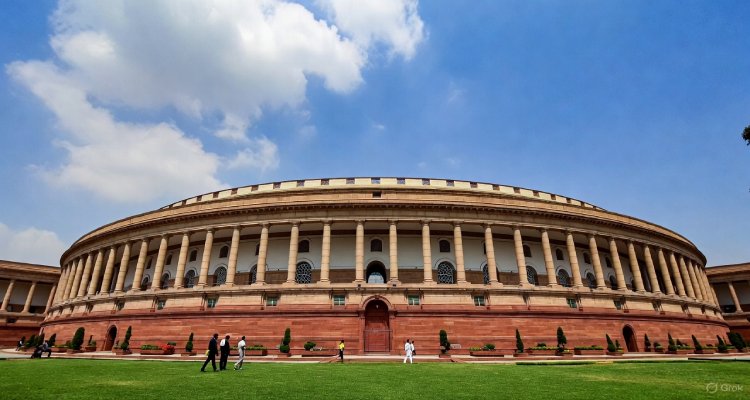RBI Keeps Repo Rate Steady at 5.5% Amid Global Tariff Uncertainties
The Reserve Bank of India’s Monetary Policy Committee (MPC) has kept the repo rate unchanged at 5.5% during its August 2025 review, signaling a neutral stance amid tariff uncertainties and steady inflation.
In a widely anticipated move, the Reserve Bank of India’s (RBI) Monetary Policy Committee (MPC) decided to hold the key repo rate steady at 5.5% during its 56th meeting, held from August 4 to 6, 2025. The decision reflects the central bank’s cautious optimism in balancing inflation management and economic growth in a global climate of heightened tariff uncertainties and fluctuating trade conditions.
A Pause in the Rate Cycle: Background and Context
This latest decision comes on the heels of a 100-basis-point cumulative cut made by the RBI since February 2025. In its previous June meeting, the MPC had slashed the repo rate by 50 basis points to 5.5%, a move that was viewed as accommodative amid signs of softening inflation.
However, the August meeting marked a strategic pause. RBI Governor Sanjay Malhotra, chairing his first policy announcement since assuming office, emphasized the importance of a “wait and watch” approach. The central bank retained its neutral policy stance, signaling neither a tightening nor an easing bias going forward.
What Is Monetary Policy & Why It Matters
Monetary policy is the central bank’s tool for regulating money supply, controlling inflation, and ensuring economic stability. The Reserve Bank of India Act, 1934, grants the RBI full responsibility for executing this policy. Since 2016, the RBI has followed a Flexible Inflation Targeting (FIT) framework, with a statutory inflation target set by the central government in consultation with the RBI every five years.
The Monetary Policy Committee (MPC)—a six-member body with equal representation from the RBI and government-appointed members—plays a key role in setting policy interest rates to maintain inflation within a designated range. The current inflation target stands at 4% ± 2%.
MPC Composition:
- Governor of the RBI – Chairperson (ex officio)
- Deputy Governor in charge of Monetary Policy – Member
- One RBI-nominated officer – Member
- Three members appointed by the Central Government
Growth Outlook: 6.5% Retained for FY26
Despite the pause in rate adjustments, the RBI remains bullish on growth. Governor Malhotra reaffirmed the central bank’s FY26 GDP growth projection at 6.5%, highlighting resilience in domestic consumption, rural revival, and steady industrial output as key contributors.
“India’s growth continues to be underpinned by strong fundamentals, despite global headwinds. The recent reduction in policy rates has started showing positive effects in sectors like housing, automobiles, and manufacturing,” Malhotra stated during the press briefing.
Why the RBI Paused: Inflation and Tariff Concerns
At the core of the decision lies global uncertainty, particularly surrounding tariff changes and trade dynamics. With ongoing discussions in major economies about protectionist measures, the RBI flagged volatility in imported inflation as a risk factor.
According to internal assessments, retail inflation hovered around 4.3% in July, well within the RBI’s comfort zone. However, the central bank noted risks stemming from volatile food prices and geopolitical tensions that could influence oil and commodity prices.
“While inflation remains within target, the global economic environment is fragile. Trade restrictions and tariff shifts, particularly between large economies, could distort price stability in emerging markets like India,” the RBI bulletin noted.
Reactions from the Financial Ecosystem
Analysts Cautiously Optimistic
Market analysts and economists largely saw the RBI’s move as prudent. Radhika Pandey, economist at the National Institute of Public Finance and Policy, noted:
“The RBI’s pause aligns with its forward-looking inflation management strategy. By holding rates, the central bank is keeping its ammunition dry should inflation spike in the coming quarters.”
Industry Reaction Mixed
The banking sector welcomed the decision, citing the need for policy continuity. However, real estate and SME sectors had hoped for a further rate cut to bolster credit flow and consumer demand.
Rajiv Bajaj, CEO of a mid-sized lending institution, commented:
“The current rate is still accommodative. But considering the high borrowing costs for smaller businesses, another cut could have supported post-pandemic recovery in the MSME segment.”
What’s Next: Monitoring, Not Moving—For Now
While the current stance is neutral, all eyes will be on inflation trends, geopolitical developments, and the upcoming festive season demand. The RBI signaled that it would remain vigilant and data-driven in its future policy decisions.
The next MPC meeting is scheduled for October 2025, where analysts expect the central bank to re-evaluate its position depending on inflation trends, monsoon outcomes, and global developments.
Conclusion: A Delicate Balancing Act
The RBI’s decision to keep the repo rate at 5.5% underscores its commitment to stability and caution, even as it encourages growth. Amid a rapidly shifting global landscape, the central bank appears focused on preserving macroeconomic resilience rather than pursuing aggressive policy shifts.
With inflation relatively under control and growth projections intact, the RBI seems to have chosen patience as its policy mantra—for now.
Disclaimer: This article is intended for informational purposes only and does not constitute financial advice. Please consult a qualified professional before making any investment or financial decisions.











